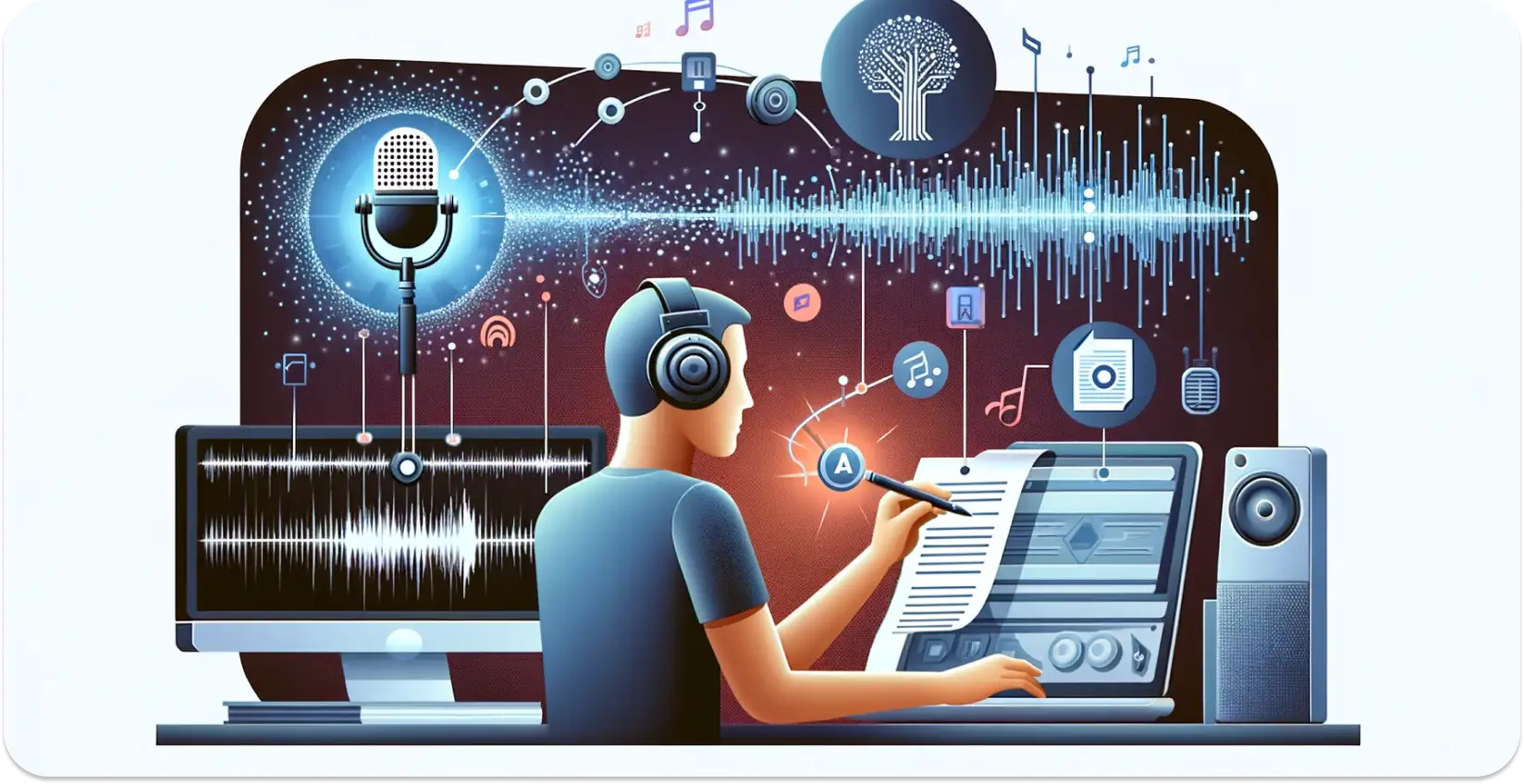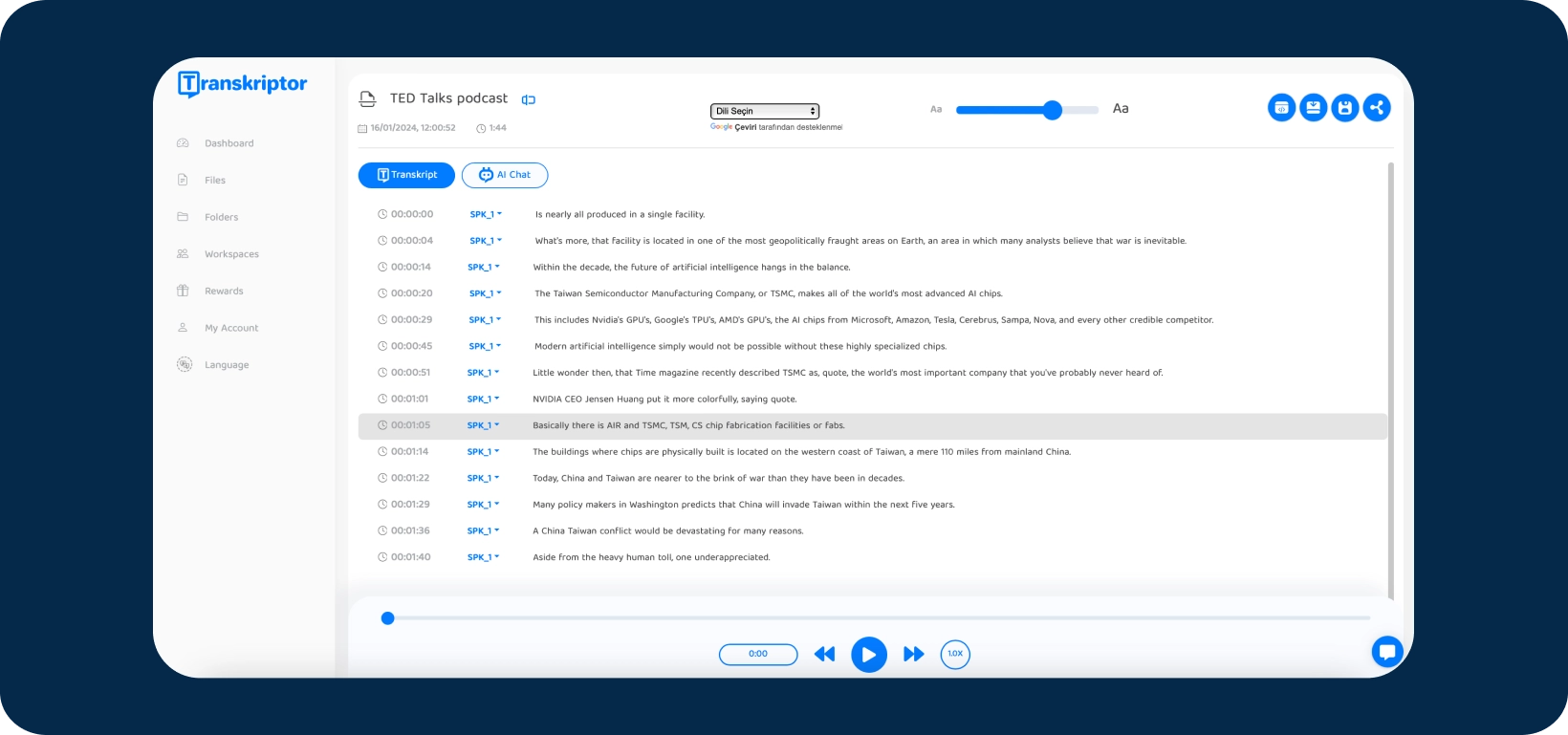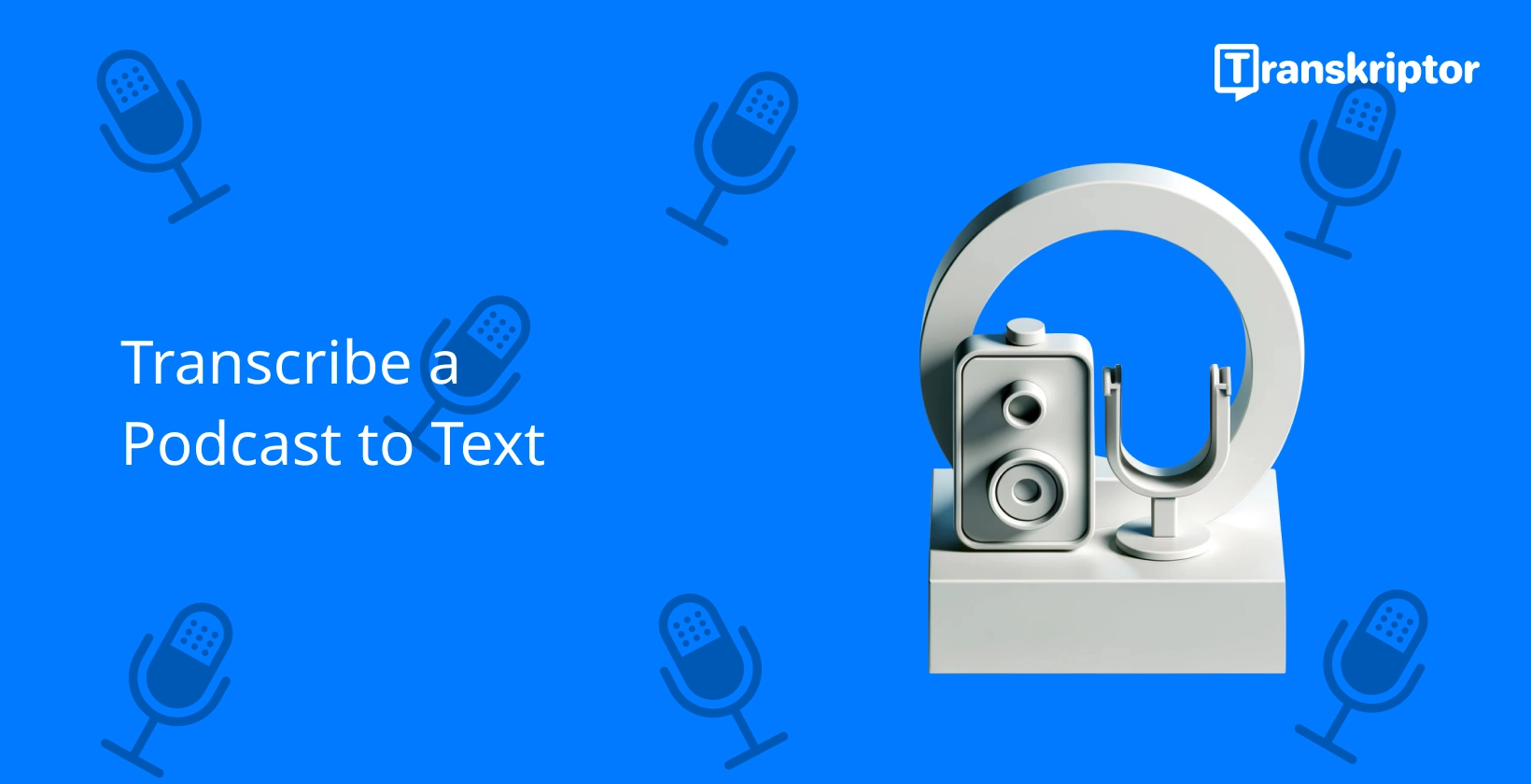With over 100+ languages supported by Transkriptor and up to 99% accuracy rates, provide your listeners with a written copy of your podcast episodes, boost your subscribers, and enjoy the extra revenue, while you save time and money.
Transcribe Your Podcast Now

How Does Podcast Transcription Work?
Transkriptor quickly and easily converts your podcast audio file into text in just a few clicks. We support a wide variety of formats, so you can transcribe to your heart's content with our intuitive dashboard. Simply upload your audio file or paste a podcast link and let us do the rest. Our state-of-the-art AI will listen carefully to multiple speakers and can transcribe in over 100 languages. You'll receive an email informing you that your text is ready within minutes, then download or share the file.
Why Choose Transkriptor?
Transcribe podcasts with ease and fascinate listeners worldwide with your content. Let your podcast episodes speak for themselves with fast and accurate transcriptions thanks to our advanced AI software.
Check out the reasons to choose us below, and start transcribing with Transkriptor today!
Create Engaging Content
Every good host knows that podcast content should be interesting, accessible, and available in multiple formats. Finding your niche can be difficult, so publishing and repurposing your podcast transcriptions on several platforms, such as Spotify, YouTube, and your own website in text form, is important to reach your ideal listener.
Transkriptor offers automatic transcription for your podcast audio file, and you can download the text file in TXT, SRT, or Word Doc format without spending hours on manual transcription. Spot errors and correct minor mistakes with our editing portal, and communicate with your audience more clearly.
Reach Listeners Worldwide
Do you want to reach people from all over the globe? Transkriptor can detect and transcribe over 100 languages with up to 99% accuracy, so your international audience can enjoy your latest episode. Grab the attention of a global audience and make your content accessible to everyone with Transkriptor's podcast transcription software. You can also record audio directly into Transkriptor with our Google Chrome extension, so you can concentrate on video editing without spending hours on manual transcription.
Accurate, Efficient, Affordable
Unlike other services, Transkriptor can convert podcasts from an audio file or web link in just a few minutes with 99% accuracy. Your podcast episode will be ready for editing, downloading, and sharing in just a few clicks. See how successful your podcast can be with affordable subscription prices starting at only $4.99 a month with the best podcast transcription tool on the market.
Transcribe a Podcast in Minutes
Create podcast transcripts in a flash for automatic captions, subtitles, and more. Your audio content shouldn't be held back from being discovered by new listeners due to a lack of episode transcripts. Start recording your latest episode with real-time transcription available with our Google Chrome extension in over 100+ different languages, letting you capture the attention of more audiences worldwide. Start your Transkriptor journey for free now and transcribe your podcasts in minutes.

Why It’s Useful to Transcribe a Podcast
Podcast transcription improves your listener's comprehension of your content, making it easier for your audience to fully engage with and understand your latest episode. New subscribers should be able to simply find your podcast on search engines and social media platforms like Facebook and Twitter, and a podcast transcript will help them discover their new favorite show.
People listen to podcasts for a variety of reasons, whether it's to learn something new, be part of the conversation, or simply be entertained. Podcasts are conversational in nature, so they automatically make great content pieces and enable you to create catchy and memorable highlights for your existing and new subscribers to share via social media posts.


